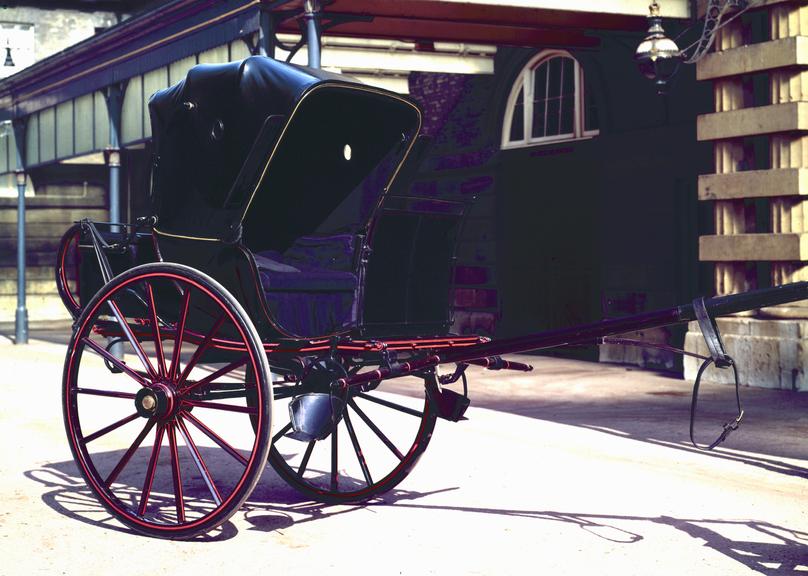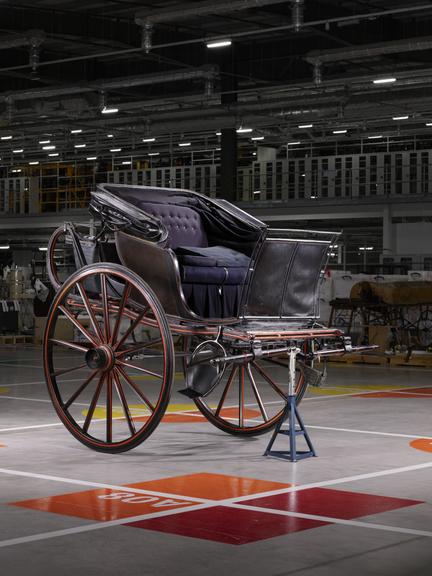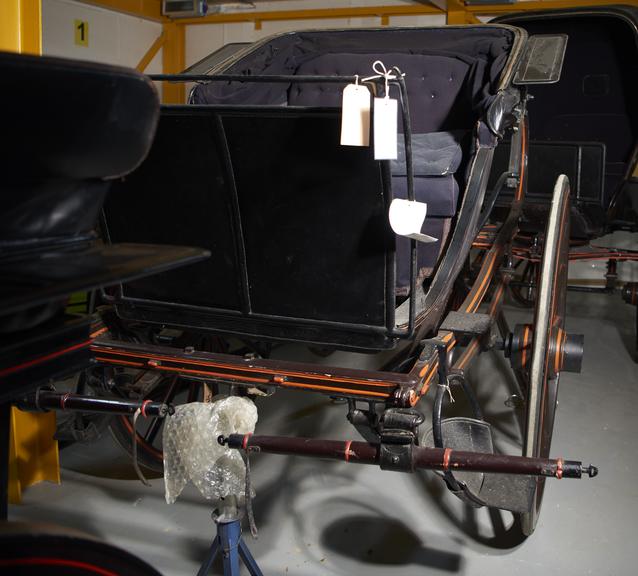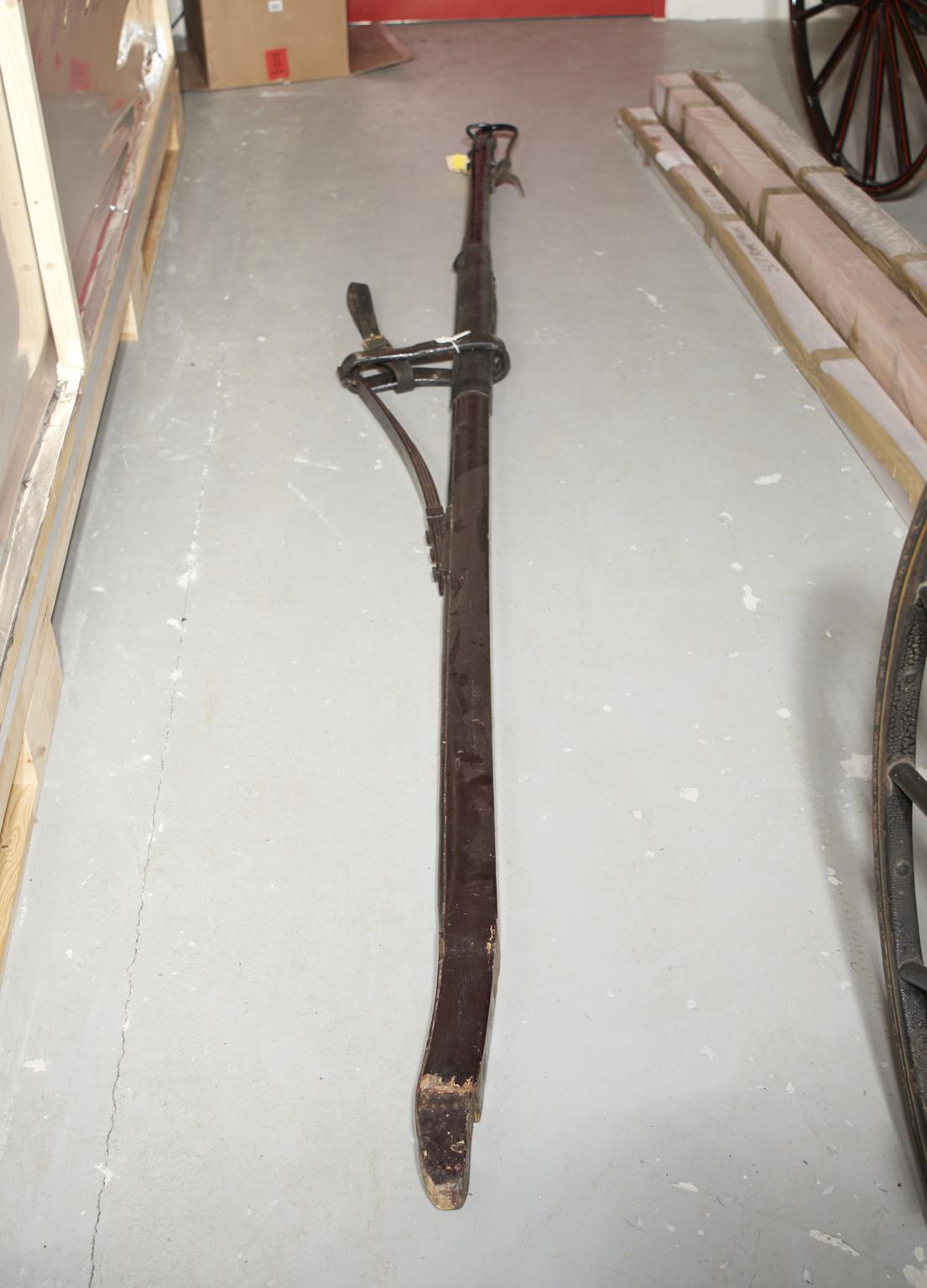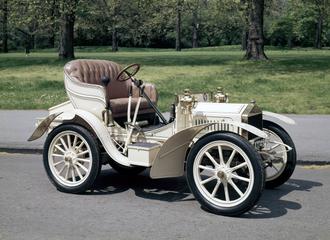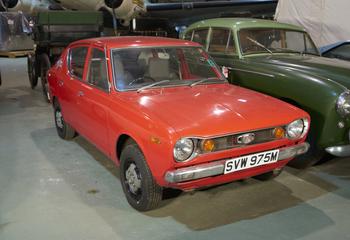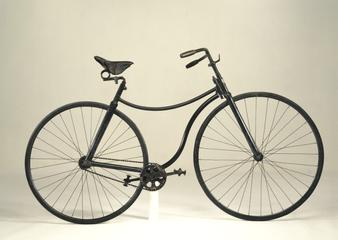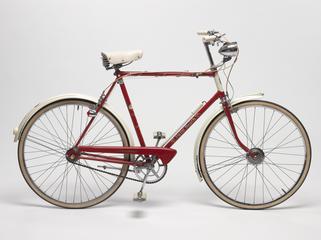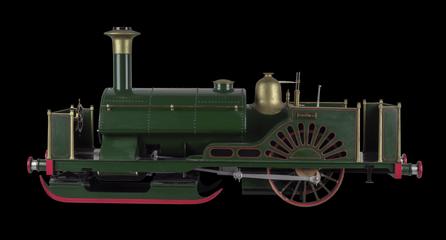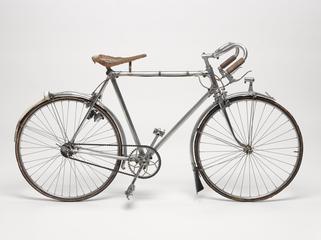Early 19th Century Curricle
This curricle was built in the late 19th century by Barker and Co, a coachmakers based in London. This carriage has two wheels, two seats and is designed to be pulled by one, sometimes two, horses.
The seating and back rest is covered in a dark blue cushioning, and the driver is protected from upturned stones and mud by a black leather dash, and from the elements by a foldable black leather hood. The undercarriage does not have any braking system but does have c-spring suspension for the carriage seat.
The frame and undercarriage are painted black with red lines, which is the official livery of the British Royal Family, a color-scheme which they kept for most of the 20th century. This carriage also has an Order of the Garter crest on its rear side. The wheels have brass hub caps which are engraved “Barker and Co, Chandos S.”.
More
Curricles were lightweight, two wheeled carriages in the same family as chaises, gigs and chariots. Curricles were popular owner-driven carriages in the 18th and early 19th century, during a time when carriages were mostly reserved for the very wealthy and privileged, who were the only ones who could afford the costs of finding two well-matched horses to pull such vehicles. Curricles were not seen as practical vehicles, but rather as either luxury vehicles meant as displays of status and taste, or as expensive sporting vehicles. The Duke of Wellington and Charles Dickens were known to enjoy driving curricles in the mid-19th century.
One notable feature of curricles is that they were specifically designed to be pulled by two horses’ side by side, whilst other two-wheeled carriages were either pulled by a single horse, or by two horses where one was in front of the other in a tandem fashion.
Curricles fell out of popularity in the early 19th century due to a combination of changing fashions and tastes in the designs of carriages, alongside the general instability and fragility of curricles. By the Victoria era, curricles were mostly replaced in favor of phaetons, victorias and barouches.
Surviving curricles are now rare amongst UK collections but can still be found in the pages of popular 19th century novels. Jane Austen includes curricles in four of her novels: Sense and Sensibility, Pride and Prejudice, Mansfield Park and Persuasion.
- Measurements:
-
overall: 1980 mm x 1950 mm x 2220 mm,
- Materials:
- wood (unidentified) , metal (unknown) , paint , textile and leather
- Object Number:
- 1938-502/1
- type:
- curricle
- Image ©
- The Board of Trustees of the Science Museum
